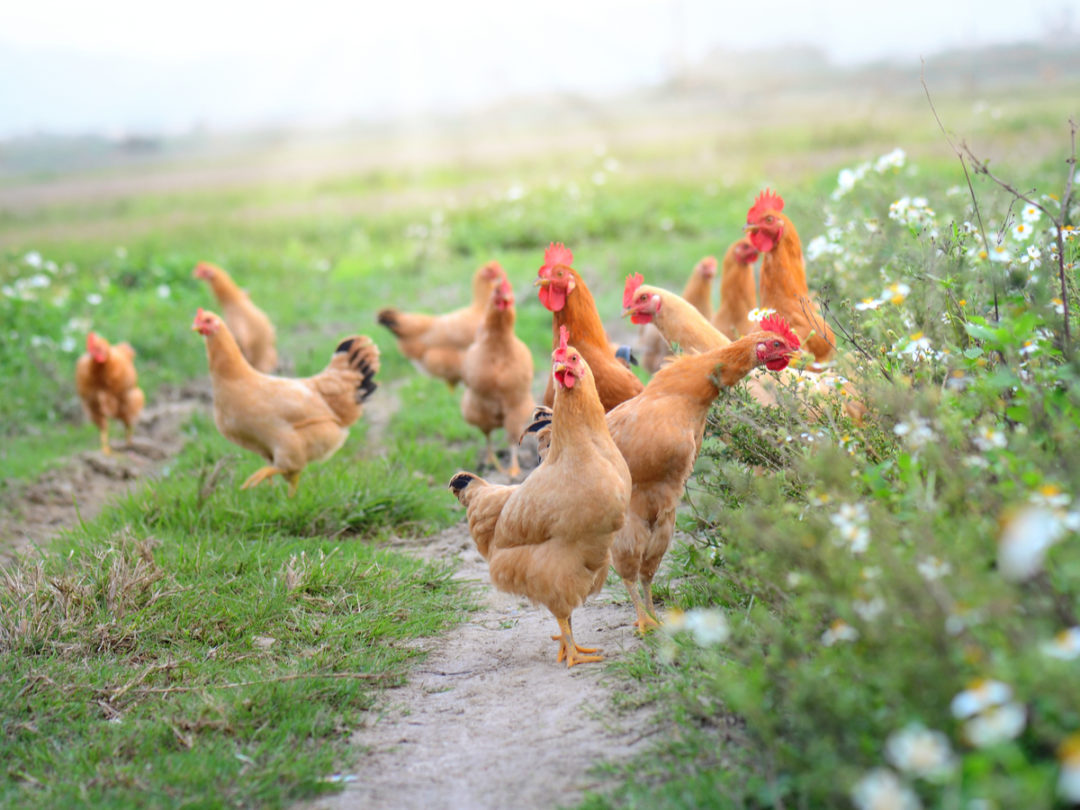
Visit Our Sponsors |
|
|
|
|
|
|
|
|
|
|
|
|
|
|
|
|
|
|
|
|
|
|
|
|
|
|
|
|
|
|
|
|
|
|
|
|
|
|
|
|
|
|
|
|
|
|
|
|
|
|
|
|
|
|
|
|

As consumers clamor for cruelty-free protein at the grocery store and in restaurants, big food is obliging them — hundreds of companies have pledged to sell only cage-free eggs by 2025, for example.
But has Corporate USA bitten off more than it can chew?
Producers are trying to create new housing for more than 300 million egg-laying hens across the U.S. — a gargantuan change that can’t happen overnight. Currently, the country is only about a quarter of the way to those commitments, according to Christine McCracken, a protein analyst at Rabobank, a Dutch lender specializing in food and agriculture. The Egg Industry Center at Iowa State University, meanwhile, uses USDA data to estimate that about 17 percent of output is now cage-free, including organics.
Going forward, the transition will cost companies, which include Walmart Inc., McDonald’s Corp. and General Mills Inc., about $7bn, McCracken predicts. That forecast is “roughly correct,” according to the EIC.
To nudge the industry forward as it confronts this task, the Humane Society of the United States recently sent out a survey to the 100 biggest food companies, asking them to report advances they’ve made in the treatment of livestock like pigs and chickens. It’s also requesting information about companies’ ability to comply with new state laws, like California’s recent mandate on animal housing, and details on what they’re doing to add more plant-based options to their menus. Responses are due June 1.
“Consumers and investors are going to have an opportunity to see which companies actually live up to their policies,” said Josh Balk, vice president of farm animal protection for the Humane Society.
Some companies are ready to report on their progress, while others are more reticent. Kraft Heinz Co. said it now sources 60 percent of its eggs as cage-free or free-range globally. General Mills reached 40 percent cage-free worldwide in 2018 and Campbell Soup said it’s at 16 percent. McDonald’s declined to comment on its progress and Walmart didn’t respond to inquiries.
The changes — which often include the planning, permitting and building of new barns — aren’t easy to make.
“It’s a major construction project,” said Brian Moscogiuri, an egg market analyst with Urner Barry.
But the pace will accelerate, Rabobank’s McCracken said. She cited Proposition 12 in California, which passed in November and established more humane housing requirements for all eggs, pork and veal sold in the state by 2022. As part of these rules, all eggs sold will have to come from hens that are cage-free.
‘Entirely Different’
“It’s an entirely different way of raising animals,” McCracken said. “It takes some learning on how to do that well. It’s a slow conversion.”
There is no uniform cage-free system, but the United Egg Producers mandates that each bird have 144 square inches of space. Caged systems, meanwhile, provide 67 to 86 square inches. The new spaces must allow birds “to exhibit natural behaviors” — so housing features like scratch areas, perches and nests are common. These spaces are also more expensive for producers, because they require more labor and can be less productive.
Even so, food-service operators haven’t raised prices, as the higher cost of production is still just a small part of the price of a menu item like an egg sandwich. At the retail level, cage-free egg sales rose 10 percent in the 12 months through Feb. 23, according to data from Nielsen. But those gains are largely driven by distribution into new stores, according to McCracken. Not all cage-free eggs find a home, either, Moscogiuri said, meaning they are sold as commodity eggs and the producer loses the premium.
Panera Bread, which was 14 percent cage-free according to its 2017 animal welfare report, is working to change the way it buys eggs, said Sara Burnett, the company’s director of wellness and food policy.
“We have to rethink our supply chain contracts to make sure we are being good partners to these farmers,” she said. The chain is using longer-term contracts to help cover upfront capital investments as egg producers transition to the new barns.
Companies have also made commitments to produce antibiotic-free chicken and gestation crate-free pork — which means female pigs aren’t packed into tiny containment areas for most of their lives.
With 2025 six years away, McCracken expects food service to hit their targets on cage-free eggs. But she isn’t convinced about retailers. Balk, meanwhile, is more optimistic.
“I expect by 2025 virtually every single egg-laying hen to be in a cage-free facility,” he said. “There may be some outliers that have to be spotlighted so they comport with the norm.”
RELATED CONTENT
RELATED VIDEOS
Timely, incisive articles delivered directly to your inbox.







